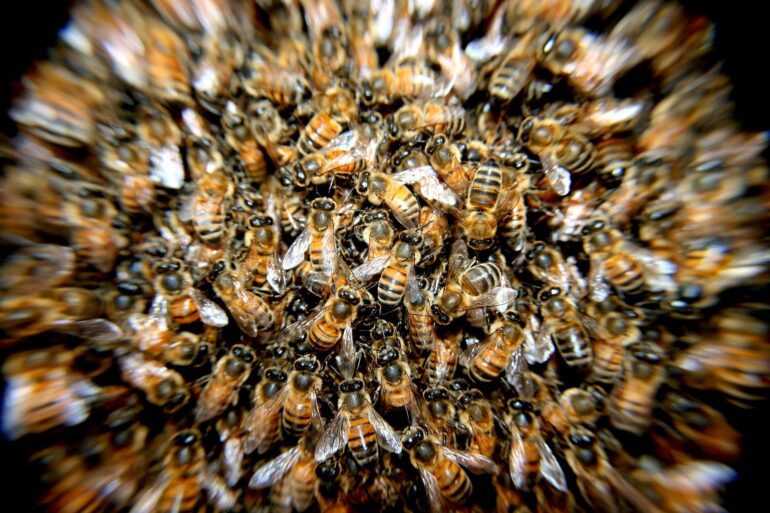TL;DR:
- Swarming, often associated with negative connotations, is crucial for the survival of animal collectives.
- Research into swarming is transforming various fields, including crowd control, traffic management, healthcare, and military applications.
- The Boids model, based on simple rules, accurately simulates swarming behavior and highlights the power of emergence.
- Swarm intelligence has been successfully used to outperform conventional methods in predicting outcomes, such as in the Kentucky Derby.
- In the healthcare sector, swarm intelligence can maintain diagnostic accuracy without compromising patient data privacy.
- Advancements in swarm-controlled drones promise improved scalability, reconnaissance, and combat capabilities.
- Swarming dynamics lead to complexity, adaptability, and efficiency in collective actions.
Main AI News:
Swarming, a term often associated with negative imagery, has long been essential for the survival of numerous animal collectives. From bees effectively searching for new colonies to starlings performing dazzling murmurations to evade predators, swarming is a widespread phenomenon across the animal kingdom. Now, research into swarming is poised to bring about transformative changes in human activities.
A collaboration of mathematicians, biologists, and social scientists is unraveling the mysteries of swarming, unlocking its potential to revolutionize various fields. Today, we witness its application in crowd control, traffic management, and understanding the spread of infectious diseases. Beyond that, swarming has started shaping the healthcare landscape, optimizing drone operations in military conflicts, and even defying the odds in sporting events.
At its core, a swarm operates as a system greater than the sum of its individual parts. Analogous to how neurons in a brain synergize to enable thought, memory, and emotion, groups of animals can act in unison to form a “super brain,” exhibiting highly complex behavior unseen in solitary creatures.
In 1986, artificial life expert Craig Reynolds brought a paradigm shift to the study of swarming through the Boids model computer simulation. The model distills swarming into a concise set of rules. The Boids, akin to characters in a video game, follow instructions to move in alignment with their neighbors, head toward the average position of their peers, and avoid collisions.
Astoundingly, Boid simulations mirror real-life swarms with striking accuracy. This reveals that swarming doesn’t necessitate designated leaders; instead, it relies on interactions between individuals abiding by simple rules in parallel – a phenomenon known as emergence.
The application of swarm intelligence by Unanimous AI in 2016 exemplifies the potency of this concept. The technology harnessed the collective knowledge of amateur racing enthusiasts to predict the Kentucky Derby’s outcome successfully. Unlike conventional methods, where predictions were aggregated, the volunteers engaged in real-time digital tug-of-war, dynamically adjusting their preferences based on others’ choices. This swarm approach outperformed highly-informed individuals and defied steep odds.
Swarming technologies are also gaining traction in the healthcare sector, addressing concerns around patient privacy amid the AI revolution. By decentralizing data storage and enabling institutions to share wisdom without exchanging raw patient data, swarm intelligence ensures diagnostic accuracy without compromising confidentiality.
In the realm of warfare, drones have emerged as crucial assets. Conventional drone technology requires one-to-one supervision, but ongoing research endeavors to establish seamless communication between drones to create swarms under a single controller. Such advancements promise to enhance scalability, reconnaissance, and striking capabilities, revolutionizing the face of combat.
Conclusion:
The study of swarming phenomena has far-reaching implications for various industries and markets. Harnessing swarm intelligence allows for innovative approaches to problem-solving and decision-making. Businesses that integrate these concepts into their processes can expect improved efficiency, adaptability, and accuracy in their operations. Embracing swarm-inspired technologies may lead to a competitive advantage in a rapidly evolving market, making it essential for companies to explore and adopt these strategies for continued success.

